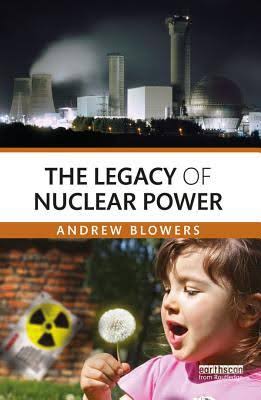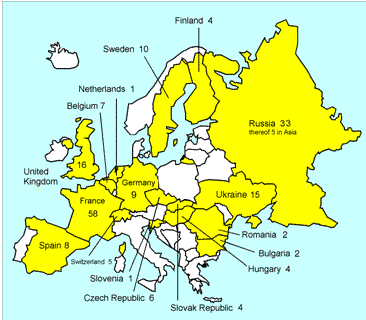Here are the presentations given by NTW to the participants of this EP&R European Project. The goal was to share NTW’s results and views while considering the process and practices established towards Civil Society. Those presentations were given under the frame of two workshops.
Useful documents
28 recommendations to limit the consequences of a nuclear crisis for the population
The road map established at the conclusion of the European research project Shamisen underlines the importance of involving the population in the management of an accident and taking into account the social, economic and psychological effects, particularly in the context of an evacuation of contaminated territories.
This article was published on the website of the IRSN, and can be found in french here.
What to do or not to do in the case of a nuclear accident? How to improve the medical follow-up and living conditions of the affected population? Because the decisions taken at the time of the accidents of Chernobyl and Fukushima sometimes “did more harm than good”, the European Commission launched Shamisen, a research program that brought together 19 European and Japanese organizations including IRSN , as well as American, Belarusian, Russian and Ukrainian experts.
The work resulted in the development of 28 specific recommendations for the nuclear accident to improve both crisis preparedness, crisis management and the post-accident phase. In addition, general principles have been identified that can be applied to other types of accidents and disasters.
This roadmap aims to extend the management of the nuclear accident beyond the protection of the population against exposure to ionizing radiation. Measures such as the evacuation of contaminated areas have important psychological, social and economic consequences which must be taken into account.
In summary, recommendations focus on three main objectives to involve the affected population in decision-making alongside experts and authorities:
1. Take into account the well-being of the affected population
2.Promote the participation of the affected population and other actors such as medical staff
3.Respect the autonomy and dignity of the affected populations.
Downolad the full 28 recommandations here.
“The legacy of Nuclear Power” by Prof.Andrew Bowers, book review and interview by Jan Haverkamp
In september 2016, Andrew Blowers, Emeritus Professor of Social Sciences at the Open University published « The Legacy of Nuclear Power ». Nuclear energy leaves behind a dangerous legacy of radioactive wastes in places that are remote and polluted landscapes of risk. Four of these places – Hanford (USA) where the plutonium for the first atomic bombs was made, Sellafield, where the UK’s nuclear legacy is concentrated and controversial, La Hague the heart of the French nuclear industry, and Gorleben, the focal point of nuclear resistance in Germany – provide the narratives for this unique account of the legacy of nuclear power. The Legacy of Nuclear Power takes a historical and geographical perspective going back to the origins of these places. The case studies are based on a variety of academic and policy sources and on conversations with a vast array of people over many years.
Jan Haverkamp is Vice-Chair of Nuclear Transparency Watch. He’s an expert consultant on nuclear energy and energy policy for WISE, Greenpeace Central and Eastern Europe, Greenpeace Switzerland. In mai 2017, he published a book review in Nuclear Monitor #843 : “The Legacy of Nuclear Power is a book about nuclear waste. But different than most, the retired UK Open University professor Andy Blowers does not approach the issue from the side the techniques under investigation to manage it. His basis is the story of five nuclear legacy sites (note: Hanford, Sellafield, La Hague, Bure and Gorleben) but analysed from the experiences of the communities who live there.”
« The leading line is the discovery that the nuclear legacy appears to be connected to peripheral places – mostly peripheral in a geographic sense, lowly populated, but also economically weak, becoming depending on a from the outside imposed nuclear mono-culture »
Find the full review on Wise Monitor here.
Jan Haverkamp also interviewed Prof.Andrew Blowers to explore the issues of the book more in detail. This interview is a reflection on what drove Andrew Blowers to dedicate over 30 years of this life to the issue of radioactive waste and the nuclear legacy.
Find the full interview on Wise Monitor here.
The Legacy of Nuclear Power, by Andrew Blowers
Routledge, Tayler & Francis Group.
Available in hard cover, paperback and as e-book (epub) : www.routledge.com/The-Legacy-of-Nuclear-Power/Blowers/p/book/9780415869997
The application of the Espoo Convention to nuclear energy-related activities
The Convention on Environmental Impact Assessment in a Transboundary Context (the Espoo Convention) sets out the obligations to assess the environmental impact of certain activities at an early stage of decision making. It also lays down the general obligation for parties to notify and consult each other on all major projects under consideration that are likely to have a significant adverse environmental impact across national borders. The purpose of the Espoo Convention is to enhance international co‑operation and allow environmentally sound decisions to be made, paying careful attention to minimising significant adverse impacts, particularly in a transboundary context.
See a complete article in the Nuclear Law Bulletin for information on the relevant provisions of the Espoo Convention applicable to nuclear energy-related activities.
Intake of iodine tablets in case of a severe nuclear accident
The intake of iodine pills is a protective measure in the event of a severe nuclear accident.
Download here the guide of the German federal Ministry for the environment, nature Conservation and nuclear safety
Documents from the German Commission on Radiological Protection
Two interesting documents communicated by NTW’s German members working on emergency preparedness and response, published by the German Commission on Radiological Protection (SSK).
–Planning areas for emergency response near nuclear power plants
As well as a website with the results of the German gamma dose rate measurement network operated by the Federal Office for Radiation Protection (Bundesamt für Strahlenschutz).
Quick guide to the Aarhus Convention
Protecting your environment: The power is in your hands
Download the quick guide to the Aarhus Convention
Taking the Nuclear Third Party Liability into the future
Download the report from the conference “Taking the nuclear third party liability into the future ” which took place in Brussels on January 20 & 21 2014.
By Andrej Klemenc, REC Slovenia and member of NTW.
Maps on nuclear power in France
Nuclear power plants in Europe
As of January 2013 there is a total of 185 nuclear power plant units with an installed electric net capacity of 162 GWe in operation in Europe (five thereof in the Asian part of the Russian Federation) and 17 units with an electric net capacity 15 GWe were under construction in five countries.
Nuclear power plants in Europe, in operation and under construction (2013) :
|
Country |
in operation |
under construction |
||
|
number |
net capacity MWe |
number |
net capacity MWe |
|
| Belgium |
7 |
5,927 |
–
|
–
|
| Bulgaria |
2 |
1,906 |
– |
– |
| Czech Repuplic |
6 |
3,766 |
–
|
–
|
| Finland |
4 |
2,736 |
1 |
1,600 |
| France |
58 |
63,130 |
1 |
1,600 |
| Germany |
9 |
12,068 |
–
|
–
|
| Hungary |
4 |
1,889 |
–
|
–
|
| Netherlands |
1 |
482 |
–
|
–
|
| Romania |
2 |
1,300 |
– |
– |
| Russian Federation |
33 |
23,643 |
11 |
9,297 |
| Slovakian Republic |
4 |
1,816 |
2 |
782 |
| Slovenia |
1 |
688 |
–
|
–
|
| Spain |
8 |
7,567 |
–
|
–
|
| Sweden |
10 |
9,395 |
–
|
–
|
| Switzerland |
5 |
3,263 |
–
|
–
|
| Ukraine |
15 |
13,107 |
2 |
1,900 |
| United Kingdom |
15 |
9,246 |
–
|
–
|
| total |
185 |
161,922 |
17 |
15,179 |
In terms of electricity generated by nuclear energy in 2011 France holds the top position with a share of 77.7 % followed by Belgium and the Slovakian Republic with 54.0 % and Ukraine with 47.2 %.



You must be logged in to post a comment.